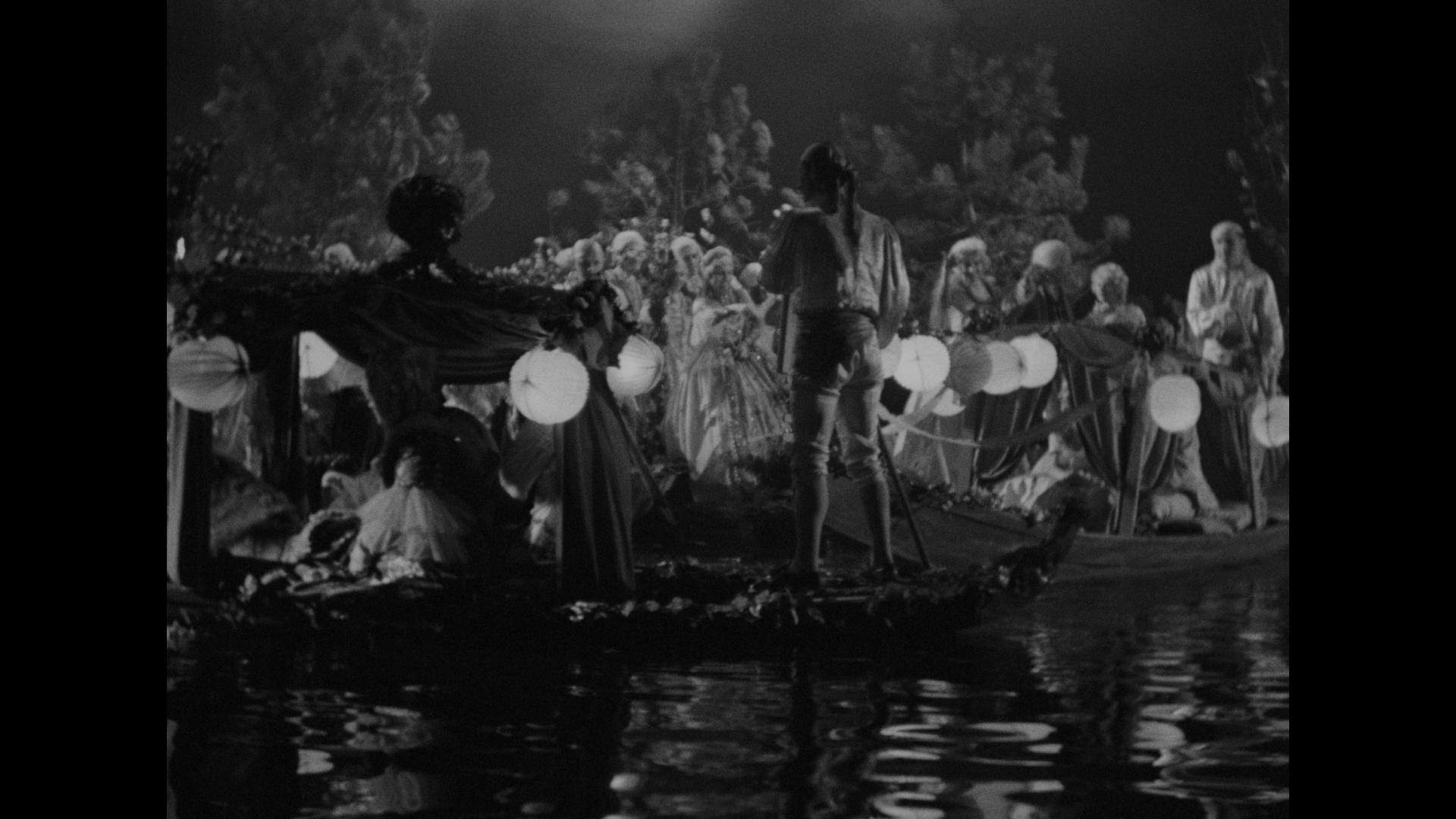


 cinematic past have resulted in some great discoveries, with many key titles not only saved
cinematic past have resulted in some great discoveries, with many key titles not only saved  from the brink of extinction (alas with far too many others gone forever) but also given a far wider audience than ever before. To that list you can add Sirius (Szíriusz), an opulent and endearing time travel tale mixing romance and adventure with some dashes of sci-fi. Essentially it's a whimsical costumer with a satirical look at the country's past, based on an 1894 novel by Ferenc Herczeg but very much tailored to contemporary viewers including explicitly setting it in 1942. It's not every day you see a genre film opening with a magical monochrome dance performance on a forest set that would make Kenneth Anger swoon, but then again, this is no everyday film.
from the brink of extinction (alas with far too many others gone forever) but also given a far wider audience than ever before. To that list you can add Sirius (Szíriusz), an opulent and endearing time travel tale mixing romance and adventure with some dashes of sci-fi. Essentially it's a whimsical costumer with a satirical look at the country's past, based on an 1894 novel by Ferenc Herczeg but very much tailored to contemporary viewers including explicitly setting it in 1942. It's not every day you see a genre film opening with a magical monochrome dance performance on a forest set that would make Kenneth Anger swoon, but then again, this is no everyday film. 1748 portrait of Venetian singer Rosina Beppo (Karády), which comes into play when they make their voyage "floating in
1748 portrait of Venetian singer Rosina Beppo (Karády), which comes into play when they make their voyage "floating in  time" and end up at that exact point. Their arrival in the woods lands Tibor in the coach with Rosina herself along with a fellow male soprano en route from Vienna to the castle of our hero's great-grandfather, Count Tibor (Rajczy), igniting an adventure of sword fights, moonlight dancing, romance, and amusing time travel confusion. Of course, the trip can't last forever...
time" and end up at that exact point. Their arrival in the woods lands Tibor in the coach with Rosina herself along with a fellow male soprano en route from Vienna to the castle of our hero's great-grandfather, Count Tibor (Rajczy), igniting an adventure of sword fights, moonlight dancing, romance, and amusing time travel confusion. Of course, the trip can't last forever... optional English subtitles) is exceptionally crisp for a film of this vintage.
optional English subtitles) is exceptionally crisp for a film of this vintage. seen in the film and their choreographer, the best way to watch this film if you don't know the basics of Hungarian history, its ties to other time travel narratives, the state of 1942 audiences, and Karády's fascinating life story including her notable artistic achievements and her heroic efforts against the Nazis. "Sirius Werkfilm” (2m27s) is a fascinating quick look at the film's production shot by a 19-year old studio trainee, preserved in surprisingly pristine quality. In a new video interview with NFI Film Archive director György Ráduly (18m54s) by Deaf Crocodile's Dennis Bartok, you get plenty about the making and preservation of the film as they converse about the film's local importance and rediscovery, its restoration, and the background of the director, as well as pointing out some amusing plot similarities to Back to the Future. The video essay "Hungary at a Tipping Point" (20m18s) by Ryan Verrill and Dr. Will Dodson fills in the background of the film's creation, the cinematic importance of Hungary, and the state of the country when the film was made on the brink of major, traumatic change. A newly-created trailer is also included, while the usual beautifully packaged limited edition also comes with a slipcase with art by Richard Cox and a 60-page illustrated book with essays by Rolf Giesen (covering director Dezső Ákos Hamza, the rise of Hungarian sci-fi, and the film's fate over the years) and Walter Chaw (on the film's use of costume melodrama, the significance of its leading lady, and the social statements being made within the narrative).
seen in the film and their choreographer, the best way to watch this film if you don't know the basics of Hungarian history, its ties to other time travel narratives, the state of 1942 audiences, and Karády's fascinating life story including her notable artistic achievements and her heroic efforts against the Nazis. "Sirius Werkfilm” (2m27s) is a fascinating quick look at the film's production shot by a 19-year old studio trainee, preserved in surprisingly pristine quality. In a new video interview with NFI Film Archive director György Ráduly (18m54s) by Deaf Crocodile's Dennis Bartok, you get plenty about the making and preservation of the film as they converse about the film's local importance and rediscovery, its restoration, and the background of the director, as well as pointing out some amusing plot similarities to Back to the Future. The video essay "Hungary at a Tipping Point" (20m18s) by Ryan Verrill and Dr. Will Dodson fills in the background of the film's creation, the cinematic importance of Hungary, and the state of the country when the film was made on the brink of major, traumatic change. A newly-created trailer is also included, while the usual beautifully packaged limited edition also comes with a slipcase with art by Richard Cox and a 60-page illustrated book with essays by Rolf Giesen (covering director Dezső Ákos Hamza, the rise of Hungarian sci-fi, and the film's fate over the years) and Walter Chaw (on the film's use of costume melodrama, the significance of its leading lady, and the social statements being made within the narrative).![]()